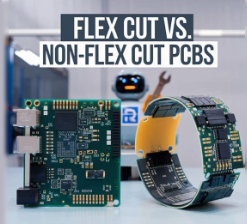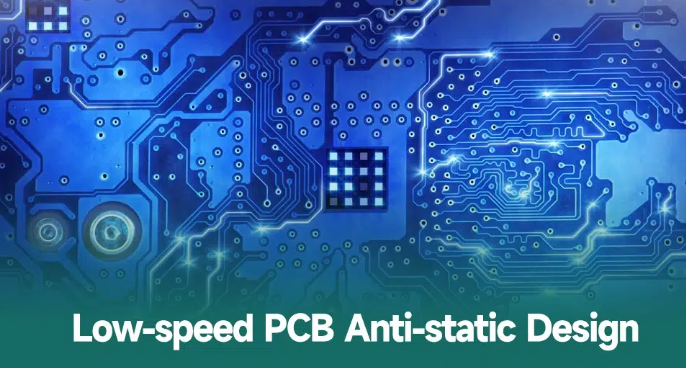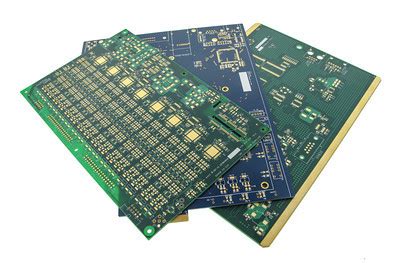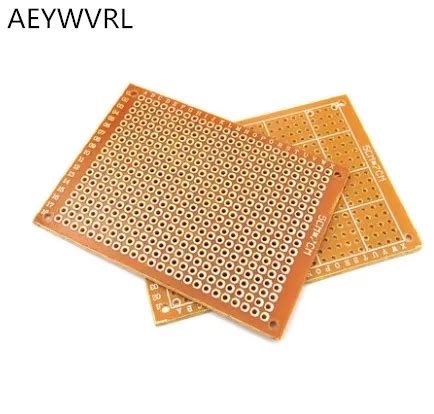Flexible vs. Non-Flexible PCB Cutting: A Comprehensive Comparison
Introduction to PCB Cutting Technologies
Printed Circuit Board (PCB) manufacturing has evolved significantly over the past few decades, with cutting technologies playing a crucial role in the production process. Two primary methods dominate the industry: flexible cutting (flex cut) and traditional non-flexible cutting (non-flex cut). These approaches differ fundamentally in their techniques, applications, and outcomes, making the choice between them critical for PCB designers and manufacturers.
Flex cut refers to advanced cutting methods that allow for greater adaptability during the PCB separation process, typically using precision laser systems or specialized routing equipment. Non-flex cut represents conventional mechanical cutting techniques like punching or standard routing that follow fixed patterns without real-time adjustments. The distinction between these methods affects not only the manufacturing process but also the final product’s quality, reliability, and application suitability.
As electronics continue to shrink in size while growing in complexity, understanding the differences between flex cut and non-flex cut PCB technologies becomes increasingly important for engineers, designers, and manufacturers. This article provides a detailed comparison of both methods, examining their technical aspects, advantages, limitations, and ideal use cases.
Technical Fundamentals of Flex Cut and Non-Flex Cut PCBs
Flex Cut PCB Technology
Flex cut PCB technology represents the more advanced approach to board separation, characterized by its adaptability during the cutting process. This method typically employs computer-controlled systems that can make real-time adjustments during cutting operations. The most common implementations include:
- Laser Cutting Systems: High-precision lasers that can follow complex contours with minimal kerf width (typically 20-50μm). CO₂ and UV lasers are most common, with the latter being particularly effective for flexible circuits.
- Adaptive Routing: Mechanical routing systems equipped with vision systems and pressure sensors that adjust cutting depth and path based on real-time feedback.
- Water Jet Cutting: Uses high-pressure water, sometimes with abrasives, for cutting without generating thermal stress.
The key advantage of flex cut technology lies in its ability to handle irregular shapes, accommodate last-minute design changes, and adapt to material variations. The cutting parameters (speed, power, depth) can be dynamically adjusted to optimize quality and prevent damage to delicate circuits.
Non-Flex Cut PCB Technology
Non-flex cut methods rely on fixed tooling and predetermined cutting paths without real-time adaptability. The primary non-flex cut techniques include:
- Punching: Uses hardened steel dies to stamp out PCBs in a single operation. Effective for high-volume production of standard shapes.
- V-Scoring: Creates V-shaped grooves on panel surfaces that allow for easy breaking along predefined lines.
- Standard Routing: Uses fixed-depth router bits following programmed paths without adaptive capabilities.
- Shearing: Mechanical cutting along straight lines for simple separation.
Non-flex cut methods excel in high-volume production of standardized PCB designs where consistency and speed outweigh the need for flexibility. The tooling costs are typically higher initially but become economical at scale.
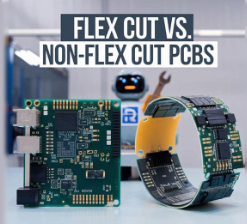
Comparative Analysis: Flex Cut vs. Non-Flex Cut
Precision and Tolerances
Flex cut systems generally offer superior precision capabilities:
- Laser flex cut systems achieve positional accuracy of ±25μm or better
- Minimum feature sizes down to 50μm are possible
- Angular precision maintained even on complex curves
Non-flex cut methods have more limited precision:
- Punching typically maintains ±100μm tolerance
- V-scoring accuracy depends on material consistency
- Router-based cutting achieves about ±75μm precision
The adaptive nature of flex cut allows for compensation of material inconsistencies and tool wear, maintaining tighter tolerances throughout production runs.
Material Compatibility and Handling
Flex cut technology demonstrates broader material compatibility:
- Effectively processes flexible substrates (polyimide, PET)
- Handles multilayer rigid-flex boards without delamination risk
- Suitable for fragile materials like thin glass-reinforced laminates
- Can cut through varied material thicknesses in one operation
Non-flex cut faces material limitations:
- Punching struggles with flexible or multilayer materials
- V-scoring works best with standard FR-4 of consistent thickness
- May cause cracking in brittle substrates
- Typically requires separate operations for different thicknesses
Production Speed and Throughput
Non-flex cut methods generally offer faster cycle times:
- Punching can process thousands of units per hour
- V-scoring and breaking is extremely rapid for simple separations
- No programming changes needed for identical boards
Flex cut is inherently slower but more versatile:
- Laser cutting speed depends on complexity (typically 100-500mm/s)
- Each unique design requires new programming
- Adaptive routing adds milliseconds per adjustment
- Better suited for low/medium volume or prototype production
Cost Considerations
The cost equation varies significantly based on production volume:
- High Volume (10,000+ units):
- Non-flex cut becomes cost-effective due to faster cycle times
- Tooling costs amortize over many units
- Material waste potentially lower with optimized nesting
- Low Volume/Prototyping:
- Flex cut eliminates expensive tooling
- No minimum order quantities
- Design changes incur minimal additional cost
- Specialty Applications:
- Flex cut justifies premium for complex geometries
- Material savings from optimized cutting paths
- Reduced scrap from adaptive error correction
Application-Specific Considerations
When to Choose Flex Cut PCB Technology
Flex cut solutions are particularly advantageous in these scenarios:
- Prototyping and Rapid Iteration:
- Allows for design changes between batches
- No tooling investment for each revision
- Faster turnaround for small quantities
- Complex Geometries:
- Intricate contours and non-rectangular shapes
- Boards with numerous internal cutouts
- 3D formed circuits requiring precise relief cuts
- Advanced Materials:
- Flexible and rigid-flex circuits
- Thin or delicate substrates
- Specialty materials like ceramic-filled PTFE
- High-Mix Production:
- Facilities handling diverse PCB designs
- Frequent product line changes
- Customization requirements
- High-Reliability Applications:
- Medical and aerospace electronics
- Where edge quality affects performance
- Minimizing microcracks in sensitive components
When Non-Flex Cut PCB is Preferable
Traditional non-flex cut methods remain the better choice for:
- High-Volume Standard Designs:
- Consumer electronics with stable designs
- Boards with simple rectangular outlines
- Products with long lifecycles
- Cost-Sensitive Applications:
- Where tooling costs can be amortized
- Price competition outweighs flexibility needs
- Established products with no anticipated changes
- Thick, Rigid Boards:
- Heavy copper power electronics
- Thick multilayer boards (>3mm)
- Where laser cutting speed becomes impractical
- Simple Separation Needs:
- Standard panel breaking requirements
- Straight-line separation only
- No complex internal cutouts
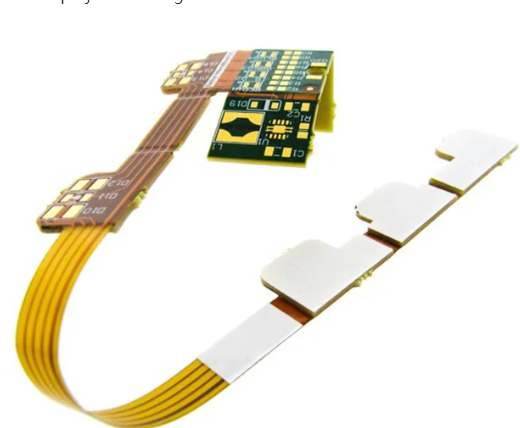
Quality and Reliability Implications
Edge Quality Characteristics
Flex cut methods typically produce superior edge quality:
- Laser-cut edges show minimal microcracking
- Smoother surface finish (Ra < 1.5μm for lasers)
- No mechanical stress-induced delamination
- Consistent quality regardless of material directionality
Non-flex cut edges exhibit more variability:
- Punching can cause micro-fractures in brittle materials
- V-scored edges may show fiber tear-out
- Router-cut edges have characteristic tool marks
- Quality may vary with material grain direction
Impact on PCB Performance
The cutting method can affect electrical and mechanical performance:
- High-Frequency Effects:
- Flex cut’s cleaner edges maintain consistent impedance
- Rough edges from punching may cause signal reflections
- Mechanical Reliability:
- Laser-cut flexible circuits withstand more bending cycles
- Microcracks from punching become failure initiation sites
- Environmental Resistance:
- Sealed edges from laser cutting better resist moisture
- Mechanical stress points may accelerate corrosion
- Assembly Considerations:
- Smoother edges facilitate automated handling
- Precise flex cut contours enable better fitting
Future Trends and Hybrid Approaches
The PCB cutting landscape continues to evolve with several emerging trends:
- Intelligent Hybrid Systems:
- Combining laser and mechanical cutting in one platform
- Using each method for optimal portions of the board
- Adaptive switching based on material and geometry
- AI-Optimized Cutting Paths:
- Machine learning algorithms for optimal tool paths
- Predictive adjustment of parameters
- Automated defect detection and correction
- Advanced Laser Technologies:
- Ultrafast femtosecond lasers for cleaner cuts
- Wavelength-optimized systems for different materials
- Combined cutting and surface treatment
- Sustainable Cutting Solutions:
- Reduced material waste through dynamic nesting
- Energy-efficient cutting processes
- Elimination of consumables in laser systems
Hybrid approaches are particularly promising, allowing manufacturers to combine the speed of mechanical cutting for standard features with the precision of lasers for critical areas. This blended methodology helps optimize both quality and throughput.

Conclusion: Making the Right Cutting Choice
The decision between flex cut and non-flex cut PCB technologies depends on multiple factors including production volume, design complexity, material requirements, and quality expectations. While flex cut methods offer greater precision and flexibility, they come with higher operational costs and slower throughput. Non-flex cut techniques remain indispensable for high-volume production of standard designs where speed and cost efficiency are paramount.
Modern PCB manufacturers are increasingly adopting both technologies, applying each where most appropriate. Many facilities now maintain flex cut capabilities for prototyping and complex designs while relying on traditional methods for volume production. The most forward-thinking operations are implementing hybrid systems that combine the strengths of both approaches.
As electronic devices continue evolving toward greater miniaturization and functionality, flex cut technologies will likely see expanded adoption. However, non-flex methods will maintain their position in the industry for standardized, high-volume applications. Understanding the capabilities and limitations of each approach enables PCB designers and manufacturers to make informed decisions that optimize both product quality and production economics.
Ultimately, the choice between flex cut and non-flex cut PCB technologies should be based on a thorough evaluation of technical requirements, production needs, and total cost considerations throughout the product lifecycle. With careful assessment, manufacturers can select the optimal cutting solution or combination of solutions for their specific application.

